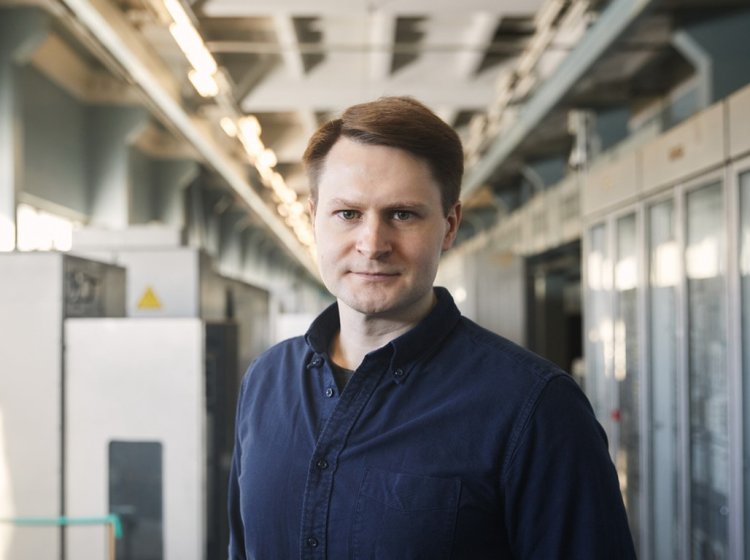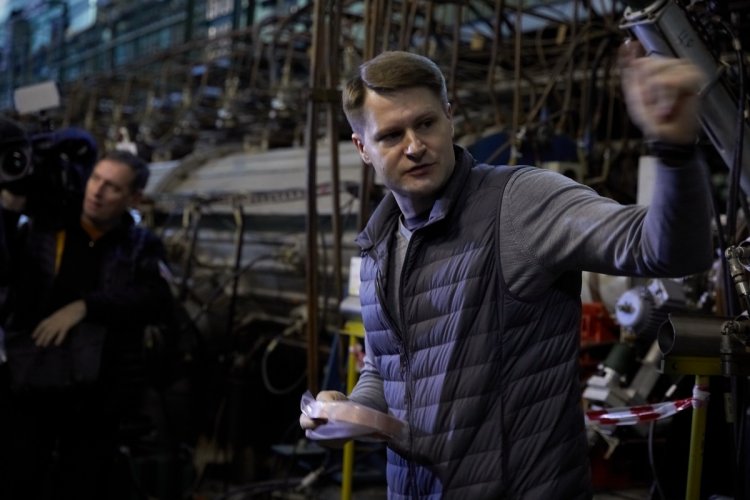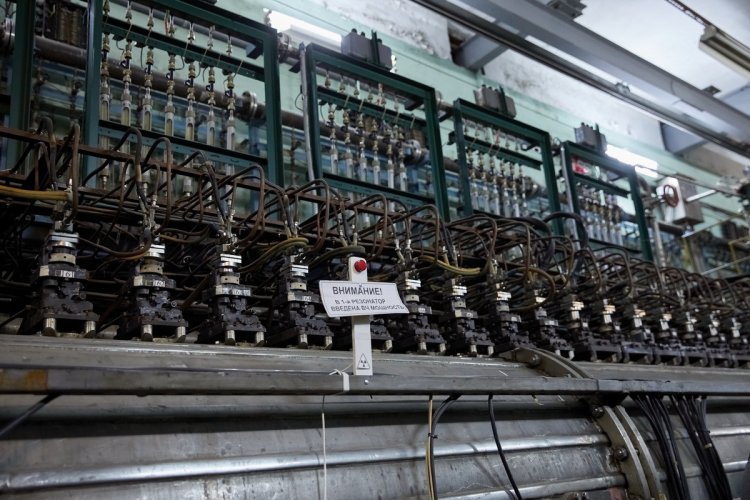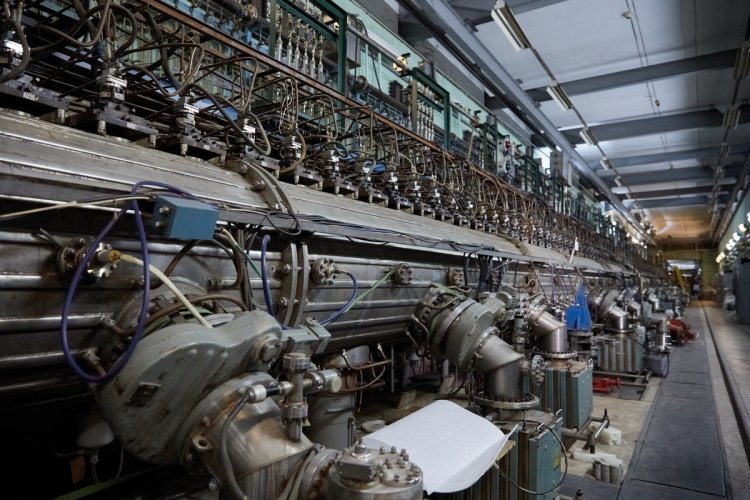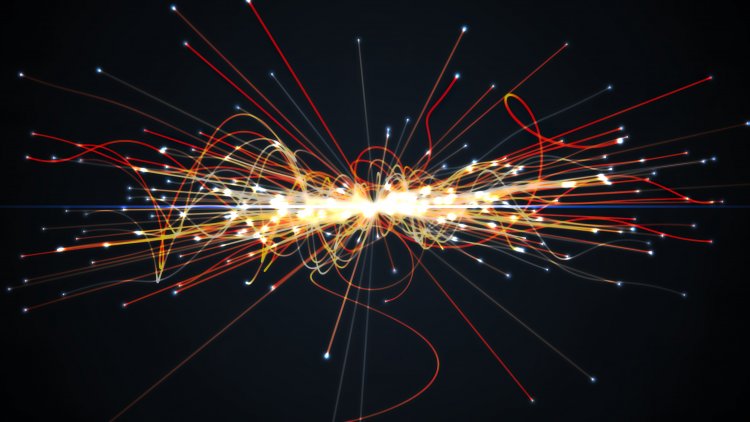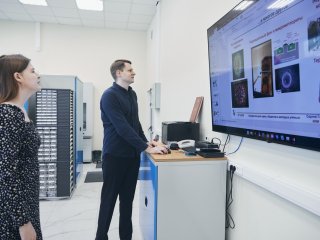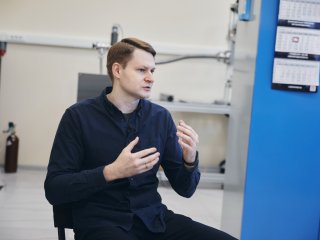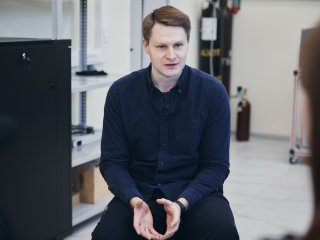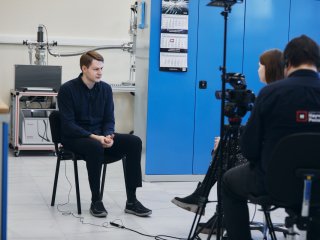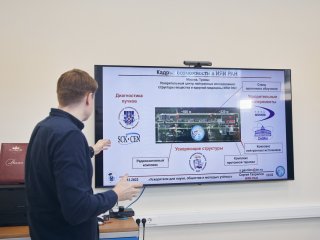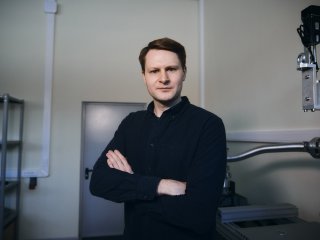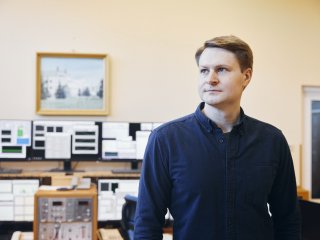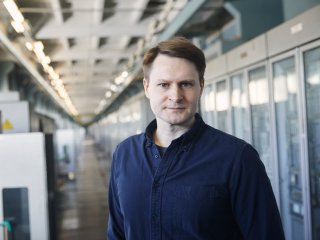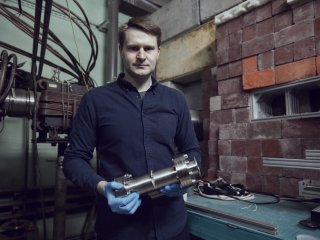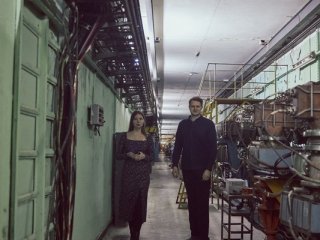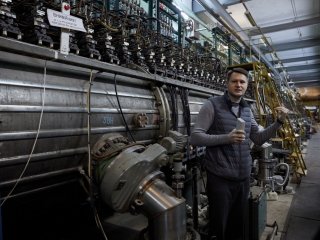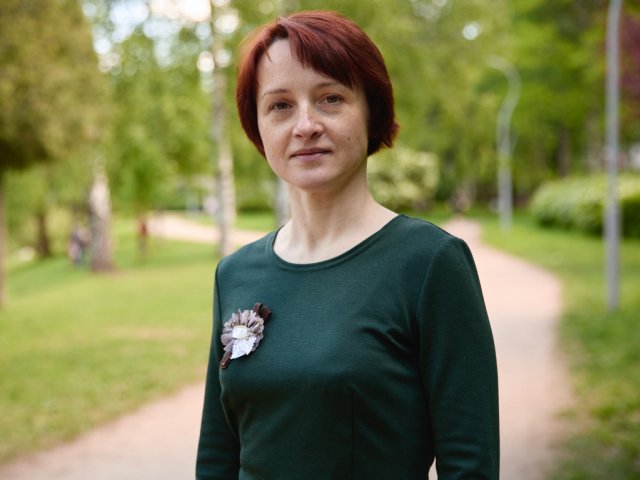Why are we unable to outsmart the nature and reach the speed of light? How are particle accelerators connected with our daily life, and what is the difference between circular and linear installations? Head of the Beam Laboratory of the Accelerator Department at the Institute of Nuclear Research of the Russian Academy of Sciences S. A. Gavrilov answers these and other questions.
Reference. Sergei Aleksandrovich Gavrilov is Candidate of Physical and Mathematical Sciences, Head of the Beam Laboratory of the Accelerator Department at the Institute for Nuclear Research (INR) of the Russian Academy of Sciences (RAS), teaching assistant of the Department of Fundamental Interactions and Cosmology at Moscow Institute of Physics and Technology (MIPT).
― Each large accelerator complex is unique. Please tell me about the distinguishing characteristics of the proton accelerator available at the RAS Institute for Nuclear Research?
― Our accelerator complex built back in the 1980s comprises a number of different installations. It is a multifunctional center for research in neutron physics, materials science, medical physics, radiation resistance of materials, and much more. All these diverse research areas make it special. The accelerator produces an extremely intense radiation beam that can be used not only to study the nature's fundamental properties, but also to solve some applied problems of nuclear medicine: obtaining radioactive isotopes for positron emission tomography (PET) or, for example, proton therapy – so-called ultra-flash therapy, as well as for other industries. The technologies utilized in our accelerator were invented several decades ago, but it is still unique. Today, there are no other installations in Russia with such a set of parameters.
― The Large Hadron Collider is ring-shaped, while your accelerator is linear. Are they fundamentally different? Do they have any similarities?
― In fact, they are fundamentally different accelerators, and they have practically no similarities, except probably the very principle of acceleration: both installations utilize the same principle of resonant particle acceleration. We should understand that a beam of charged particles enters the Large Hadron Collider (LHC) not out of thin air, with a wave of a wand, but goes from a complex of other accelerators starting with two linear machines. Although they are linear, one should not compare them with our installation, as completely different technologies were used to create them. However, these machines with different technical parameters use the same physical operation principles as our proton and negative hydrogen ion accelerator. In the Large Hadron Collider, a beam of particles runs from a linear accelerator to several rings and reaches the LHC only after that. Therefore, this is a multistage acceleration system.
― Particles collide with each other at the Large Hadron Collider, but they collide with a target in your case, right?
― Right. Beams fly towards each other in the collider, and their collision leads to specific reactions. At the same time, in linear accelerators such as ours, the beam hits some fixed macroscopic target. For example, a metal sample, a printed circuit board, cell cultures, etc., i.e., an object that we can observe and control.
― What happens after the particles collide with this target?
― There may be different scenarios. For example, if your task is to produce medical isotopes, then the process in a simplified form is as follows: you irradiate the target with a beam of protons, new atomic nuclei are formed from them, and you obtain isotopes of these or those radioactive elements that can be used to produce radiopharmaceuticals. If we want to study the radiation resistance of materials, we will use other mechanisms, and our main focus is to study and control a response of this or that object to radiation. Such studies are very important for our space industry, because, when you launch a satellite into the Earth’s orbit, you will inevitably encounter a solar wind, particle flows in the Earth’s radiation belt, etc., i.e., space radiation in all its glory. We know that all microelectronics elements begin to gradually degrade when impacted by radiation: they work worse, signals arrive with errors, and a number of other challenges arise. All this does not happen all at once, but accumulates integrally, over the years of satellite operation. Therefore, before launching an aircraft in space, you must know for sure for how long your electronics will be operating in specific conditions. And that is exactly what we need particle accelerators for.
― Thus, when particles collide with a target, the dose of radiation released is the same as on the Earth’s orbit, right?
― Yes. The accelerator helps obtain the same total radiation effect in several pulses as on the orbit. Besides, even with incomplete beam intensity, you get the same radiation load on an object that it would receive when flying for a decade in outer space. Our scientists look for promising components and materials to create radiation-resistant electronics.
― Speaking about fundamental physical studies, what accelerators are more sought-after: linear or circular?
— It depends on the type of tasks. As far as high-energy physics is concerned, of course, we cannot manage without circular accelerators where beams can be accelerated to very high speeds, which makes it possible to perform the most sophisticated experiments connected with high energies. If we talk about, for example, fundamental studies associated with solid state physics or crystallography, neutron sources based on linear accelerators are needed here. Such sources require high radiation intensity rather than high energies: the most important thing is to produce a large number of neutrons rather than high particle collision energies.
Particle collision in the Large Hadron Collider. Image: vchalup / 123RF
― How many particle accelerators are there in the world? What tasks do they most often perform?
― There are approximately 40 thousand particle accelerators in the world. At the same time, only about 5% of them are used to solve the fundamental problems of physics, others are used for applied matters primarily connected with electronics and nuclear medicine. Overall, about 30% of all the accelerators in the world are used to solve medical problems. The same share, i.e., about 30%, falls on so-called ion implantation that helps create semiconductor materials to ensure the existence of our modern microelectronics. Besides, quite many accelerators are machines used for purely applied tasks, such as, for example, electron beam welding. There are only a few people who know that sterilization and pasteurization of products and materials also often take place thanks to accelerators. The same is relevant to customs control or electron beam wastewater treatment projects. The scope of application for particle accelerators is really huge.
― Why do scientists use such a small number of accelerators to solve the fundamental problems of physics, i.e., only 5% of the total number? Weren’t they built for this purpose specifically?
― Not only for this purpose. Today, accelerators are an integral part of our daily life. I have listed above only a small part of their scope of application. Many things that we encounter in our life have emerged thanks to accelerators, quite often – as a side effect of their use. For example, the Internet, when CERN needed to exchange large amounts of data. By the way, the technology behind the production of magnets for MRI scanners has also come to us from accelerator physics. Sometimes applied tasks solved for the society turn out to be even more important than the fundamental component. Of course, we solve fundamental problems using accelerators too, but we should not confine ourselves to those alone, and it is good that a concurrently emerging technology manages to find such a successful application in our life.
The INR RAS accelerator produces rubidium-82 isotope for the PET diagnostics of cardiovascular diseases. This installation can also be used to produce actinium-225 isotope for nuclear medicine at the rate of about 20-30 Ci a year, which is technically impossible with any other installation in the world. Photo: Elena Librik, Scientific Russia
― How close is the acceleration speed of particles in accelerators to the speed of light?
― People who work with accelerators usually deal with the notion of energy rather than the notion of speed.
― What is the difference?
― As energy increases, the speed of particles tends to reach the speed of light. At the same time, when speaking about high-energy beams, like those used at the Large Hadron Collider, energy can increase very significantly, but speed will be changing slowly, by millionths of percent, while remaining close to the speed of light. As for the INR RAS linear accelerator, we start acceleration almost from zero, with low energies, and the speed of particles reaches approximately 43% of the speed of light at the output of the accelerator's front-end part. The maximum energy our accelerator can currently accelerate particles to is 305 MeV, or about 66% of the speed of light.
― Is it enough for experiments? Would you like to improve this indicator?
― Definitely. We would like to slightly increase this energy to work with neutron sources more efficiently. The thing is that the number of neutrons needed by researchers depends on the energy of the beam hitting the target. Besides, targets are designed in such a way that they produce the maximum number of neutrons only when a specific level of energy is reached. Therefore, we plan to gradually increase the beam energy by about 30%. At the same time, higher energies are not needed for radioisotope production and other tasks concerned with nuclear medicine. Speaking about radiation resistance studies, the available energies are, on the contrary, too high, and we even have to turn off some part of the accelerator while such experiments are in progress.
The speed of light is assumed to be 299,792.458 km/s. Photo: nealisa / 123RF
― What is behind the fundamental constraint on the maximum possible speed of movement in the Universe? What specific mechanisms restrain macroscopic humans as we approach the speed of light?
― The Albert Einstein’s special theory of relativity has a postulate about the constancy of the speed of light. It means that the ultimate speed limit is the speed of an electromagnetic wave, or light, in vacuum that equals about 300 thousand km/s. To accelerate a specific massive particle, you have to ensure a constant transfer of specific energy to it. Thus, the more significant acceleration you want to achieve, the more energy you have to transfer to the particle. As a result, it turns out that if you want to reach the speed of light, you have to transfer infinite energy to a massive material particle! Therefore, only massless particles, such as photons, gluons, or a hypothetical graviton, can reach the cherished speed of 300 thousand km/s, as the speed of gravity propagation is supposedly equal to the speed of light. However, humans and other macroscopic objects of our Universe cannot move at the speed of light due to the absence of infinite energy that we have to transfer. Nonetheless, we can accelerate our particles to the speeds that do not equal the speed of light, but are close to it – the so-called relativistic speeds.
― We know that protons at the Large Hadron Collider lack only 3 m/s to reach the speed of light. This value looks so small...
― Yes, that’s the catch. This value will always be missing, as now we simply have no devices on our Earth to accelerate particles more significantly. Therefore, as I have already said, it is more convenient for us to deal with the notion of energy rather than with the notion of speed: energy changes radically where speed changes slightly. At the same time, the energy currently available at the LHC cannot be compared with the huge energy of particles from cosmic rays coming to us from afar. Therefore, the studies of cosmic rays will continue being an independent part of high-energy physics not tied to accelerators.
― Let us summarize our conversation by returning to the unique proton accelerator of the INR RAS that is over 30 years old. How long will it be able to work?
― The accelerator complex will be working for as long as there are specialists who know how it works and how to maintain it. The average age of the team is over 60 years, and, unfortunately, we do not expect any fundamentally new staff to come. It would be nice to build the continuity of our knowledge, so that the specialists maintaining the accelerator could pass the baton to new young employees. Anyway, we will be working for as long as it is necessary, because any beam regime will always find its consumers – be it flash therapy, space flights, or fundamental studies of the nature secrets.
― Let us hope that the accelerator will be working for many years further on. Thank you for this interesting conversation!
― Thank you!
The interview was taken with the support of the Ministry of Science and Higher Education of the Russian Federation and the Russian Academy of Sciences.
